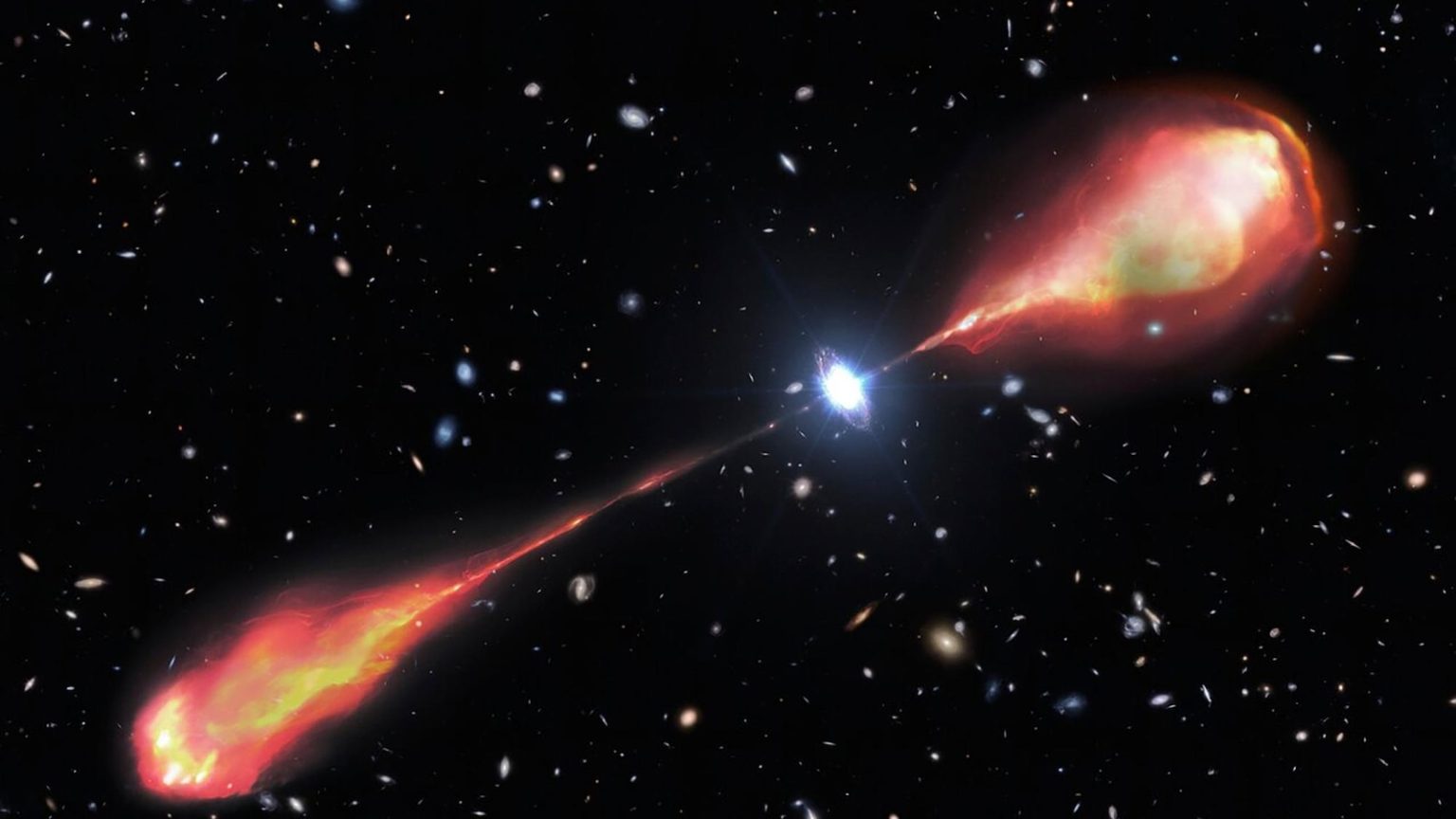Unveiling the Monster Radio Jet: A Glimpse into the Early Universe
In a groundbreaking discovery, astronomers have identified a colossal radio jet emanating from a quasar that dates back to the first billion years of the universe. This enormous jet of radio waves, spanning twice the width of the Milky Way galaxy, is the largest ever detected in such an early phase of cosmic history. The discovery, reported in the Astrophysical Journal Letters, provides a rare glimpse into the formation and evolution of the universe’s most luminous objects. Located at a time when the universe was just 9% of its current age, this quasar and its massive jet offer scientists a unique opportunity to study the conditions that shaped the early cosmos.
The Elusive Radio Jets of the Distant Past
Radio jets, like the one discovered, are not uncommon in our cosmic neighborhood. However, observing such phenomena in the distant early universe has proven to be a significant challenge for astronomers. The cosmic microwave background (CMB), a relic radiation from the Big Bang, acts as a persistent barrier, obscuring our view of distant objects. Despite these challenges, the sheer scale and intensity of this quasar’s jet have made it detectable from Earth, even at such a great distance. As lead author Anniek Gloudemans of the National Science Foundation’s NoirLab noted, "It’s only because this object is so extreme that we can observe it from Earth, even though it’s really far away."
The Quasar at the Heart of the Jet
At the core of this phenomenon is a quasar, one of the brightest objects in the universe. Quasars are incredibly luminous galactic cores powered by supermassive black holes. As gas and dust fall into these black holes, they release enormous amounts of energy, making quasars visible across vast distances. The quasar in question, discovered just a few years ago, is estimated to have formed when the universe was merely 1.2 billion years old. Its black hole is massive, containing the equivalent of 450 million times the mass of our Sun. Interestingly, the black hole at the center of this quasar is not particularly massive compared to others, highlighting the extraordinary conditions that must have fueled its growth.
A Double-Sided Radio Wave of Unprecedented Scale
The radio jet associated with this quasar is a double-sided structure, meaning it extends in two opposite directions from the central black hole. Estimated to be at least 200,000 light-years across, this jet is not only massive but also ancient. To put this into perspective, a single light-year is approximately 5.8 trillion miles, making the jet a truly awe-inspiring feature of the cosmos. The existence of such a large and well-defined structure so early in the universe’s history raises important questions about the speed of black hole growth and the role of these objects in shaping the evolution of galaxies.
Observing the Unobservable: A Collaborative Effort
The discovery of this monster radio jet was made possible by a collaborative effort involving observatories across Europe, Hawaii, and Texas. These telescopes worked together to gather the data needed to identify and study the quasar and its jet. The project underscores the importance of international cooperation in advancing our understanding of the universe. Despite the challenges posed by the CMB, the sheer size and brightness of the quasar’s jet allowed scientists to peer through the cosmic veil, revealing a piece of history that has been hidden for billions of years.
Breaking Down the Significance: What Does This Mean for Science?
The discovery of this quasar and its radio jet is more than just a fascinating find; it is a crucial step forward in our understanding of the early universe. By studying such ancient objects, scientists can gain insights into the formation and growth of black holes, the role of quasars in shaping galaxies, and the overall evolution of the cosmos. This find also highlights the potential for future discoveries, as advances in technology and observational techniques continue to uncover the secrets of the universe. As astronomers continue to explore the cosmos, discoveries like this remind us of the awe-inspiring scale and complexity of the universe we inhabit.















